Ituzaingó Formation
The Ituzaingó Formation (Spanish: Formación Ituzaingó), in older literature also described as Entre Ríos or Entrerriana Formation, is an extensive geological formation of Late Miocene (Tortonian, or Huayquerian in the SALMA classification) age in the Paraná Basin of the Corrientes, Santa Fe and Entre Ríos Provinces in Mesopotamia, northeastern Argentina.[1] The formation comprises mudstones, cross-bedded sandstones and conglomerates deposited in a fluvio-deltaic environment and is renowned for the preservation of a rich fossil assemblage, including many mammals, birds, reptiles, fish, bivalves, foraminifera, ichnofossils and flora.
| Ituzaingó Formation Stratigraphic range: Tortonian (Huayquerian) ~9.0–7.3 Ma | |
|---|---|
| Type | Geological formation |
| Sub-units | Conglomerado Osifero Member |
| Underlies | Puerto Alvear, Hernandarías, Timbúes & Yupoí Formations |
| Overlies | Paraná & Rosario Formations |
| Area | 120,000 km2 (46,000 sq mi) |
| Thickness | Up to 150 m (490 ft) Typically 10–20 m (33–66 ft) |
| Lithology | |
| Primary | Sandstone, mudstone |
| Other | Conglomerate |
| Location | |
| Location | Mesopotamia |
| Coordinates | 31.7°S 60.4°W |
| Approximate paleocoordinates | 31.8°S 58.3°W |
| Region | Corrientes, Santa Fe & Entre Ríos Provinces |
| Country | |
| Extent | Paraná Basin |
| Type section | |
| Named for | Ituzaingó |
| Named by | De Alba |
| Year defined | 1953 |
Description
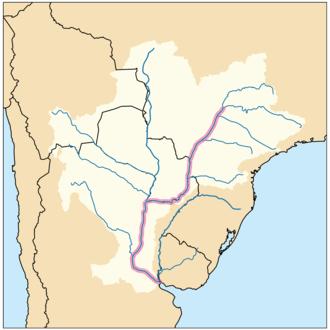
The Ituzaingó Formation was first described by De Alba in 1953 and later by Herbst in 1971.[2] The up to 150 metres (490 ft), but in most areas between 10 and 20 metres (33 and 66 ft) thick formation is found in an area of 120,000 square kilometres (46,000 sq mi),[3] stretching from the Paraná River to 40 kilometres (25 mi) east of Tostado.[4] The Ituzaingó Formation crops out in the northeasternmost part of Argentina (Mesopotamia), in the provinces of Corrientes, Santa Fe and Entre Ríos, among other locations along the banks of the Paraná River.[5]
Stratigraphy
The formation overlies the marine Paraná Formation and is unconformably overlain by the Puerto Alvear,[6] Hernandarías and Yupoí Formations of Early Pleistocene (Uquian and Ensenadan respectively) age.[5][7][8] At the shores of the Paraná River, the formation underlies the Timbúes Formation.[9] In certain places along the same river, the formation cuts into the underlying Rosario Formation.[10]
The formation contains a basal conglomeratic member "Conglomerado osífero" (bony conglomerate) with abundant vertebrate remains.[11] This conglomerate is overlain by almost unfossiliferous whitish to yellow brown sandstones and green mudstones. The Ituzaingó Formation (as Entre Ríos Formation) was correlated with the Puelches Formation of the subsurface of Buenos Aires Province. According to the mammals occurring in the conglomerate and the stratigraphic relationships, the age of the base of Ituzaingo Formation is almost exclusively Tortonian (Late Miocene) or Huayquerian in the SALMA classification.[12]
Depositional environment
The formation, as the Paraná and Puelches Formations, has been deposited in a vast Miocene tidal flat environment.[13] Both the terrestrial and freshwater fauna of the Ituzaingó Formation indicates a climate warmer than present. The freshwater vertebrate record suggests important basin connections with Amazonian basins.[11]
Alternatively, the Conglomerado Osífero Member has been interpreted as tide-dominated fluvial channels, pertaining to the marine Paraná Formation.[14]
Fossil content
The Ituzaingó Formation has provided a large variety of fossils, of various groups, from mammals to birds and reptiles to fish and flora. The terrestrial fauna is predominant while a few marine genera are also present.[15] The presence of typical Amazonian freshwater fish and absence of austral fauna in both the underlying Paraná and the Ituzaingó Formation suggests a connection with northern areas of South America. The fauns has been correlated to the older Miocene faunas of the Honda Group at La Venta in Colombia, the Urumaco Formation at Urumaco in Venezuela and the Pebas Formation of the Amazon region of Colombia, Ecuador, Peru and Brazil.[16] Several ground sloth genera present in the Ituzaingó Formation are endemic from this unit, whereas other are also present in the Arroyo Chasicó Formation of Buenos Aires Province, the Andalhuala and Corral Quemado Formations of Catamarca Province, and the Toro Negro Formation of La Rioja Province.[17]
| Group | Fossils | Image | Notes |
|---|---|---|---|
| Ground sloths | Pronothrotherium mirabilis | 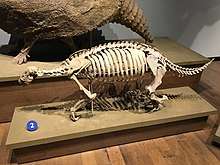 | |
| Amphiocnus paranense, Eomegatherium nanum, Megabradys darwini, Megalonychops primigenius, Menilaus affinis, Mesopotamocnus brevirostrum, Octomylodon aversus, Ortotherium brevirostrum, O. laticurvatum, O. robustum, O. schlosseri, O. scrofum, O. seneum, Paranabradys vucetichae, Pliomegatherium lelongi, Pliomorphus ameghinoi, P. gracilis, P. mutilatus, P. robustus, Prolestodon antiquus, P. paranensis, Promegatherium parvulum, P. smaltatum, Promylodon paranensis, Protomegalonyx doellojuradoi, P. praecursor, Ranculcus scalabrinianus, Sphenotherus paranensis, Strabosodon acuticavus, S. obtusicavus, Torcellia paranense, Pyramiodontherium sp., Scelidotheriinae indet. | |||
| Glyptodonts | Eleutherocercus paranensis | 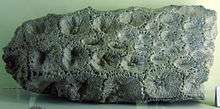 | |
| Chasicotatus spinozai, Chlamyphractus pressulus, Comaphorus concisus, Hoplophorus verus, Kraglievichia paranense, Macroeuphractus retusus, Palaehoplophorus antiquus, Paraglyptodon paranensis, Parahoplophorus paranensis, Plohophorus paranensis, Proeuphractus limpidus, Protoglyptodon primiformis, Pseudoeuryurus lelongianus, Scirrotherium carinatum, ?Trachycalyptus cingulatus, Urotherium interundatum, Berthawyleria sp., ?Zaedyus sp. | |||
| Rodents | Briaromys trouessartianus, Cardiatherium paranense, Carlesia pendolai, Diaphoromys compressidens, D. gamayensis, D. mesopotamicus, Doellomys parcus, Eumegamys contortus, E. dubius, E. scalabrinianus, E. paranensis, Eumegamysops praependens, Gyriabrus glutinatus, G. holmbergi, G. indivisus, G. rebagliattii, Haplostropha sacabriniana,Isostylomys ameghinoi, I. laurillardi, Lagostomopsis antiquus, L. pallidens, Myocastor obesus, M. paranensis, M. sinuata, Neoepiblema ambrosettianus, N. horridula, Olenopsis typicus, Paradoxomys cancrivorus, Pentastylodon racedi, Pentastylomys seriei, Perimys scalabrinianus, Phoberomys burmeisteri, P. insolita, P. lozanoi, P. minima, P. praecursor, Phugatherium cataclisticum, Potamarchus murinus, P. sigmodon, Protabrocoma paranensis, Protomegamys coligatus, Pseudosigmomys paranensis, Rusconia crassidens, Strophostephanos jheringi, Telodontomys compressidens, Tetrastylomys castellanosi, Tetrastylus aguilari, T. diffusus, T. laevigatus, T. robustus, T. (Protelicomys) atavus, Anatochoerus, Anchimysops, Cardiatherium, Cardiomys, Caviodon, Colpostemma sp., Contracavia, Kiyutherium, Paleocavia, Parodimys, Plexochoerus, Pliodolichotis, Procardiatherium, Prodolichotis, Protohydrochoerus | ||
| Toxodonts | ?Adinotherium paranense | 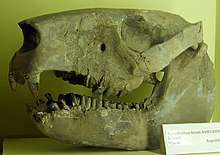 | |
| Xotodon doellojuradi, X. foricurvatus | 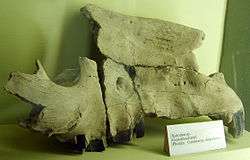 | ||
| Dilobodon lutarius, Dinotoxodon paranensis, Eutomodus elautus, Palaeotoxodon paranensis, ?P. protoburmeisteri, ?P. virgatus, Stenotephanos plicidens, ?Berroia sp. | |||
| Litopterns | Diadiaphorus paranensis | 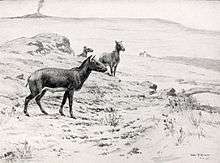 | |
| Brachytherium cuspidatum, Licaphrium mesopotamiense, Neobrachytherium ameghinoi, Oxyodontherium piramydatus, O. zeballosi, Paranauchenia denticulata, Promacrauchenia antiqua, Proterotherium cervioides, P. gradatum, Scalabrinitherium bravardi, S. rothii, Coelosoma eversa, Cullinia sp. | |||
| Sparassodonts | Thylacosmilus atrox |  | |
| Stylocynus paranensis | |||
| Typotheres | Munizia paranensis, Protypotherium antiquum, Trachytypotherium sp. | ||
| Cetaceans | Saurocetes gigas, Iniidae indet. | ||
| Bats | Eumysops parodii, Notictis ortizi | ||
| Other mammals | Cyonasua argentina, Dasypus neogaeus, Haplodontherium limun, Neohapalops rothi, Pachynodon modicus, Philander entrerianus, Toxodontherium compressum, T. reverendum, Zygolestes paranensis, Chironectes sp. | ||
| Birds | Andalgalornis sp. | 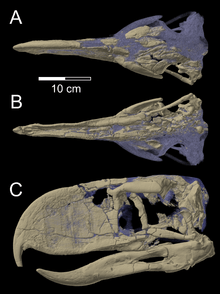 | |
| Devincenzia pozzi, Macranhinga paranensis, M. ranzii, Palaelodus cf. ambiguus, Rhea (Pterocnemia) mesopotamica, Megapaloelodus sp., Phoenicopteridae indet., Phorusrhacidae indet., Rallidae indet., Rheidae indet. | |||
| Crocodiles | Caiman latirostris | 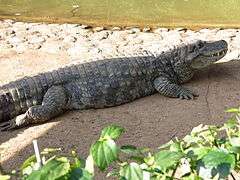 | |
| C. cf. yacare | _2.jpg) | ||
| Caiman australis, C. gasparinae, C. jacare, C. lutescens, Gryposuchus neogaeus, Mourasuchus arendsi | |||
| Lizards | Tupinambis cf. merianae |  | |
| Turtles | Parahydraspis paranaensis, Phrynops cf. geoffroanus, Testudo paranensis | ||
| Fish | Megapiranha paranensis Colossoma macropomus |  | |
| Potamotrygon motoro | 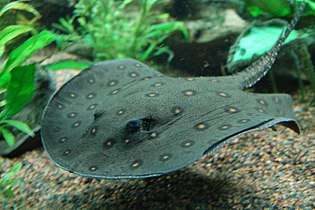 | ||
| Squatina dumeril | 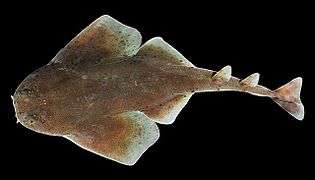 | ||
| Phractocephalus ivy, Cynodontidae indet. | |||
| Invertebrates | Protelphidium tuberculatum, Ostrea sp. | ||
| Macroflora | Anadenantheroxylon villaurquicense, Astroniumxylon bonplandianum, A. parabalansae, Curtiembreoxylon poledrii, Gleditsioxylon paramorphoides, Guadua morronei, G. zuloagae, Laurinoxylon artabeae, Mangroveoxylon areniensis, Menendoxylon vasallensis, Microlobiusxylon paranaensis, Maytenoxylon, Mimosoxylon, Palmoxylon yuqueriense, Prosopisinoxylon americanum, Prumnopityoxylon gnaedingerae, Ruprechtioxylon breae, Scalarixylon, Schinopsixylon heckii, Soroceaxylon entrerriensis, Syagrus, Uruguaianoxylon striata | ||
| Ichnofossils | Arenicolites | ||
References
- Ituzaingó Formation at Fossilworks.org
- Vezzosi, 2015, p.27
- Vezzosi, 2015, p.28
- Vezzosi, 2015, p.29
- Franco, 2014, p.16
- Brunetto, 2013, p.22
- Cione et al., 2000, p.195
- Cione et al., 2009, p.3
- Vezzosi, 2015, p.41
- Vezzosi, 2015, p.75
- Cione et al., 2005, p.49
- Colonia La Celina at Fossilworks.org
- Torra, 2005, p.46
- Martín Pérez, 2013, p.291
- Martín Pérez, 2013, p.27
- Cione et al., 2005, p.58
- Brandoni, 2013, p.135
- Paraná, Pueblo Brugo to Diamante, Ituzaingó Fm. at Fossilworks.org
- Ciudad de Paraná at Fossilworks.org
- Brandoni & Scillato, 2007, p.430
- Brandoni & Scillato, 2007, p.431
- Brandoni, 2008, p.14
- Brandoni, 2008, p.16
- Brandoni, 2011, p.36
- Brandoni, 2014, p.34
- Scillato et al., 2013, pp.119–120
- Góis et al., 2013, p.177
- Candela, 2005, pp.43–46
- Noriega & Agnolin, 2008, pp.272-285
- Agnolin & Noriega, 2012
- Scheyer & Delfino, 2016, p.56
- Cione et al., 2009, p.4
- Cione et al., 2013, p.70
- Cione et al., 2005, p.52
- Azpelicueta & Cione, 2016, p.221
- Torra, 2005, p.45
- Franco, 2018, p.646
- Franco, 2014, p.25
- Brea et al., 2013a, pp.45-47
- Brea et al., 2013b, p.4
- Franco & Brea, 2015, p.3
- Moya & Brea, 2020
Bibliography
- El Neógeno de la Mesopotamia argentina
- Brunetto, Ernesto; Jorge I. Noriega, and Diego Brandoni. 2013. Sedimentología, estratigrafía y edad de la Formación Ituzaingó en la provincia de Entre Ríos, Argentina in El Neógeno de la Mesopotamia argentina. Asociación Paleontológica Argentina, Publicación Especial 14. 13–27. Accessed 2018-10-08.
- Brea, Mariana; María Jimena Franco, and Alejandro F. Zucol. 2013a. Paleoflora de la Formación Paraná (Mioceno Tardío), Cuenca Chaco-Paranaense, Argentina in El Neógeno de la Mesopotamia argentina. Asociación Paleontológica Argentina, Publicación Especial 14. 41–55. Accessed 2018-10-08.
- Cione, Alberto L.; Daniel A. Cabrera; María de las Mercedes Azpelicueta; Jorge R. Casciotta, and María Julia Barla. 2013. Peces del Mioceno marino y continental en Entre Ríos, Oriente Central de Argentina in El Neógeno de la Mesopotamia argentina. Asociación Paleontológica Argentina, Publicación Especial 14. 65–77. Accessed 2018-10-08.
- Scillato Yané, Gustavo J.; Flávio Góis; Alfredo E. Zurita; Alfredo A. Carlini; Laureano R. González Ruiz; Cecilia M. Krmpotic; Cristian Oliva, and Martín Zamorano. 2013. Los Cingulata (Mammalia, Xenarthra) del "Conglomerado Osífero" (Miocene tardío) de la Formación Ituzaingó de Entre Ríos, Argentina. Revista de la Asociación Paleontológica Argentina Publicación Especial 14. 118–134. Accessed 2018-10-08.
- Brandoni, Diego. 2013. Los Tardigrada (Mammalia, Xenarthra) del Mioceno Tardío de Entre Ríos, Argentina in El Neógeno de la Mesopotamia argentina. Asociación Paleontológica Argentina, Publicación Especial 14. 135–144. Accessed 2018-10-08.
- Agnolín, Federico L., and Jorge I. Noriega. 2012. Una nueva especie de ñandú (Aves: Rheidae) del Mioceno tardío de la Mesopotamia Argentina. Ameghiniana 49. 236–246. Accessed 2018-10-08.
- Azpelicueta, María de las Mercedes, and Alberto Luis Cione. 2016. A southern species of the tropical catfish genus Phractocephalus (Teleostei: Siluriformes) in the Miocene of South America. Journal of South American Earth Sciences 67. 221–230. Accessed 2018-10-08.
- Brandoni, Diego. 2014. A new genus of Megalonychidae (Mammalia, Xenarthra) from the Late Miocene of Argentina. Revista Brasileira de Paleontologia 17. 33–42. Accessed 2018-10-08.
- Brandoni, Diego. 2011. The Megalonychidae (Xenarthra, Tardigrada) from the late Miocene of Entre Ríos Province, Argentina, with remarks on their systematics and biogeography. Geobios 44. 33–44. Accessed 2018-10-08.
- Brandoni, Diego. 2008. Nuevos materiales de Ortotheriinae (Xenarthra, Tardigrada, Megalonychidae) procedentes del "Mesopotamiense" (Mioceno tardío) de Entre Ríos. Temas de la Biodiversidad del Litoral 17. 11–20. Accessed 2018-10-08.
- Brandoni, Diego, and Gustavo J. Scillato Yané. 2007. Los Megatheriinae (Xenarthra, Tardigrada) del Terciario de Entre Ríos, Argentina: aspectos taxonómicos y sistemáticos. Ameghiniana 44. 427–434. Accessed 2018-10-08.
- Brea, Mariana; Alejandro F. Zucol, and María Jimena Franco. 2013b. A new Bambusoideae (Poaceae: Bambusoideae: Bambuseae: Guaduinae) from the Ituzaingó Formation (Pliocene–Pleistocene), Entre Ríos, Argentina. Review of Palaeobotany and Palynology 192. 1–9. Accessed 2018-10-08.
- Candela, Adriana Magdalena. 2005. Los roedores del “Mesopotamiense” (Mioceno tardío, Formación Ituzaingó) de la provincia de Entre Ríos (Argentina). INSUGEO 14. 37–48. Accessed 2018-10-08.
- Cione, L.A.; W.M. Dahdul; J.G. Lundberg, and A. Machado Allison. 2009. Megapiranha paranensis, a new genus and species of Serrasalmidae (Characiformes, Teleostei) from the upper Miocene of Argentina. Journal of Vertebrate Paleontology 29. 350–358. Accessed 2018-10-08.
- Cione, Alberto Luis; Jorge Rafael Casciotta; María de las Mercedes Azpelicueta; María Julia Barla, and Mario Alberto Cozzuol. 2005. Peces marinos y continentales del Mioceno del área mesopotámica argentina. Edad y relaciones biogeográficas. INSUGEO 14. 49–64. Accessed 2018-10-08.
- Cione, A.L.; M.M. Azpelicueta; M. Bond; A.A. Carlini; J.R. Casciotta; M.A. Cozzuol; M. Fuente; Z. Gasparini, and F.J. Goin, J. Noriega, G.J. Scillato Yané, L. Soibelzon, E.P. Tonni, D. Verzi, and M.G. Vucetich. 2000. Miocene vertebrates from Entre Rios province, eastern Argentina. Serie Correlación Geológica 14. 191–237. Accessed 2018-10-08.
- Franco, María Jimena. 2018. Small Celastraceae and Polygonaceae twigs from the Upper Cenozoic (Ituzaingó Formation) of the La Plata Basin, Argentina. Historical Biology: An International Journal of Paleobiology 30. 646–660. Accessed 2018-10-08.
- Franco, María Jimena, and Marianne Brea. 2015. First extra-Patagonian record of Podocarpaceae fossil wood in the Upper Cenozoic (Ituzaingó Formation) of Argentina. New Zealand Journal of Botany 53. 103–116. Accessed 2018-10-08.
- Franco, María Jimena. 2014. Estípites de Arecaceae en la Formación Ituzaingó (Plioceno-Pleistoceno), Entre Ríos, Argentina. Acta geológica lilloana 26. 14–29. Accessed 2018-10-08.
- Góis, Flávio; Gustavo Juan Scillato Yané; Alfredo Armando Carlini, and Edson Guilherme. 2013. A new species of Scirrotherium Edmund & Theodor, 1997 (Xenarthra, Cingulata, Pampatheriidae) from the late Miocene of South America. Alcheringa: An Australasian Journal of Palaeontology 37. 177–188. Accessed 2018-10-08.
- Martín Pérez, Leandro. 2013. Sistemática, tafonomía y paleoecología de los invertebrados de la Formación Paraná (Mioceno), Provincia de Entre Ríos, Argentina (PhD thesis), 1–398. Universidad Nacional de La Plata. Accessed 2018-10-08.
- Moya, Eliana, and Mariana Brea. 2020. Combretaceous fossil wood from Ituzaingó Formation (Late Miocene?), Argentina, indicate a coastal marine environment. Review of Palaeobotany and Palynology in press. Article 104270. doi:10.1016/j.revpalbo.2020.104270
- Noriega, Jorge I., and Federico L. Agnolin. 2008. El registro paleontológico de las Aves del “Mesopotamiense” (Formación Ituzaingó; Mioceno tardío-Plioceno) de la provincia de Entre Ríos, Argentina (Mioceno Superior) de Argentina. Temas de la Biodiversidad del Litoral III 17. 271–290. Accessed 2018-10-08.
- Scheyer, T.M., and M. Delfino. 2016. The late Miocene caimanine fauna (Crocodylia: Alligatoroidea) of the Urumaco Formation, Venezuela. Palaeontologia Electronica 19. 1–57. Accessed 2018-10-09.
- Torra, Roberto. 2005. The Chaco Paraná Basin rift basin system. An approach to the tectonic-stratigraphical evolution from the Late Cretaceous to Quaternary. Ciência e Natura 27. 25–64. Accessed 2018-10-08.
- Vezzosi, Raúl Ignacio. 2015. Diversidad de los mamíferos del Pleistoceno de la Provincia de Santa Fe, Argentina: aspectos taxonómicos, bioestratigráficos y paleobiogeográficos relacionados (PhD thesis), 1–913. Universidad Nacional de La Plata. Accessed 2018-10-08.
Further reading
- Brandoni, Diego; Gustavo J. Scillato Yané; Ángel R. Miño Boilini, and Emmanuel Favotti. 2016. Los Tardigrada (Mammalia, Xenarthra) de Argentina: diversidad, evolución y biogeografía. Contribuciones del MACN _. 263–274. Accessed 2018-10-08.
- Croft, Darin A. 2016. Horned Armadillos and Rafting Monkeys: The Fascinating Fossil Mammals of South America, 1–320. Indiana University Press ISBN 9780253020949. Accessed 2018-10-08.
- Simpson, George Gaylord. 1996. Splendid Isolation: The Curious History of South American Mammals, 1–275. UMI ISBN 9780783733111. Accessed 2018-10-08.
- Tambussi, Claudia P., and Federico Degrange. 2012. South American and Antarctic Continental Cenozoic Birds: Paleobiogeographic Affinities and Disparities, 1–113. Springer ISBN 9789400754676. Accessed 2018-10-08.